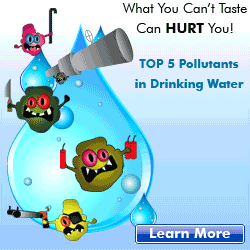
Modern countries have the benefits of having high-quality choices when it comes to disinfecting the public water supply. But what can small communities of the world do when they do not even have a water treatment plant to properly disinfect their water supply? Well, the options are limited. But there is one option that is gaining ground.
Oddly enough...it involves the sun.
Simply exposing your water to the sun's rays has its benefits. And apparently, its use is becoming widespread.
What are the benefits of Solar Water Disinfection?
- improvement of the microbiological quality of drinking water
- using solar UV-A radiation and temperature to inactivate pathogens causing diarrhoea
- used at household level under the responsibility of the individual user
- that is simple in application that relies on locally available resources, plastic bottles, and sunlight, a renewable energy source
- that is replicable with very low investment costs
At least one-third of the population in developing countries has no access to safe drinking water. The lack of adequate water supply and sanitation facilities causes a serious health hazard and exposes many to the risk of water-borne diseases: There are about 4 billion cases of diarrhea per year, out of which 2.5 million cases end in death, mostly among children under the age of five. This is equivalent to one child dying every 15 seconds or 20 jumbo jets crashing every day. Solar Water Disinfection (SODIS) can contribute to improving this precarious situation.
How does SODIS work? SODIS, Solar water disinfection is a simple method to improve the quality of drinking water by using sunlight to inactivate pathogens causing diarrhea. Contaminated water is filled into transparent plastic bottles and exposed to the full sunlight for 6 hours. During the exposure, the UV-A radiation (wavelength 320-400nm) of the sunlight destroys the pathogens. A synergy of UV-Aand temperature occurs if the water temperature rises above 45°C.
What are the limitations to Solar Disinfection?
- SODIS does not change the chemical water quality
- SODIS does not increase the water quantity or reduce water shortages
- SODIS requires relatively clear water (turbidity less than 30 NTU)
- SODIS is not useful to treat large volumes of water
- SODIS requires suitable climate and weather conditions. Regions well suited for SODIS are located between latitude 35°N and 35°S
What is the Exposure time? 6 hours under bright or up to 50% cloudy sky, 2 consecutive days under 100% cloudy sky. During days of continuous rainfall, SODIS does not perform satisfactorily. Water boiling or rainwater harvesting is recommended during these days.



